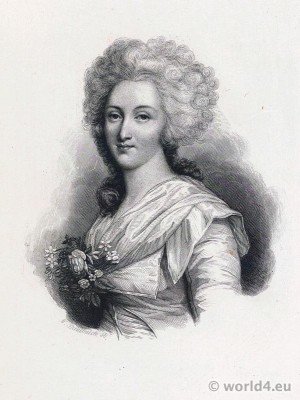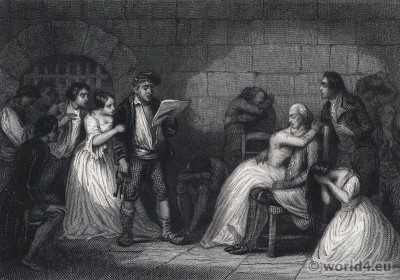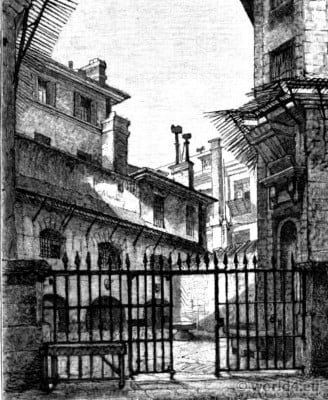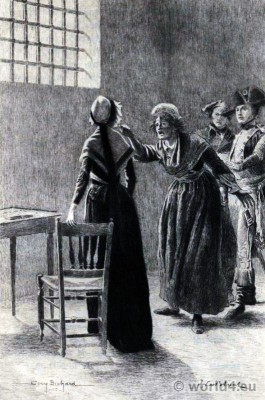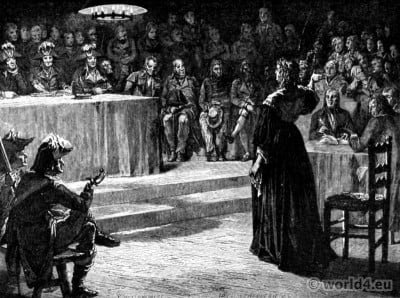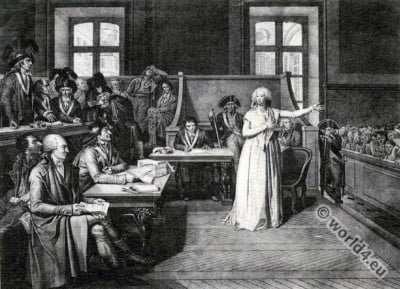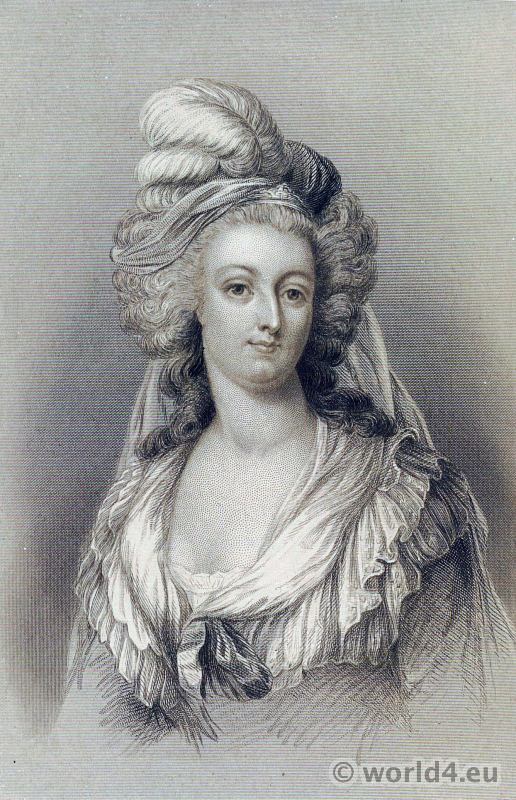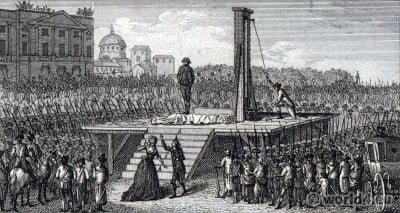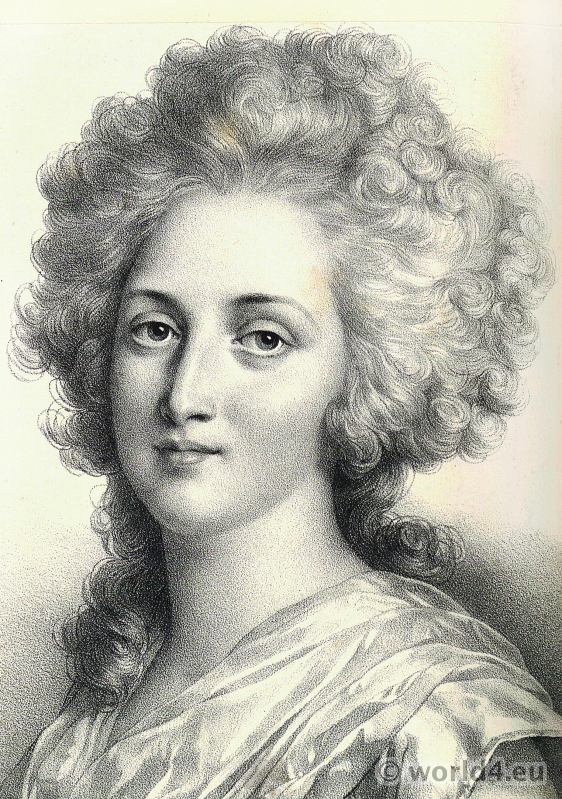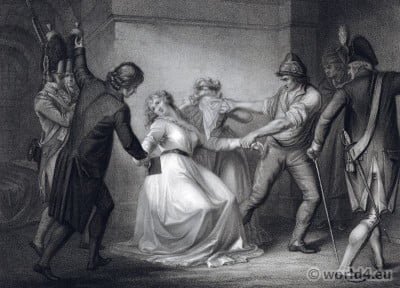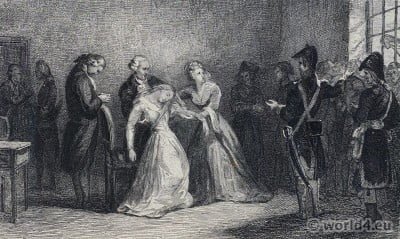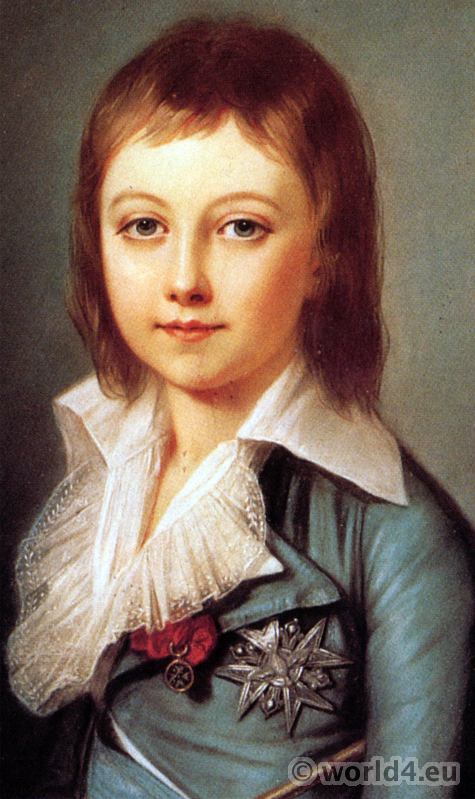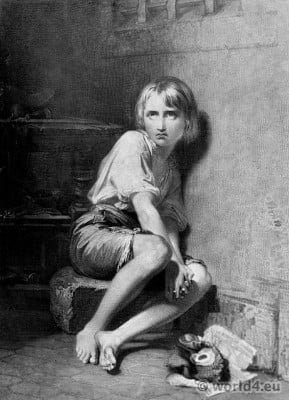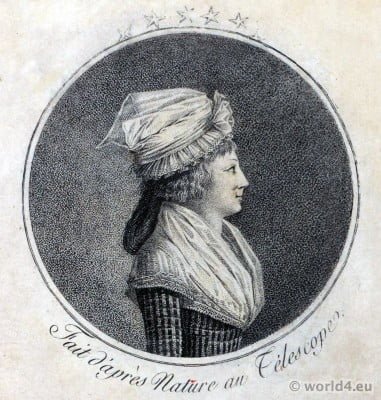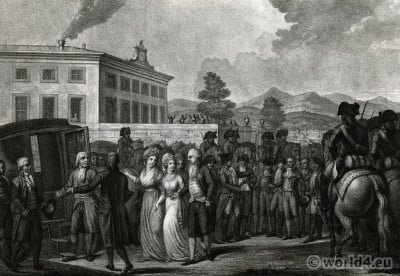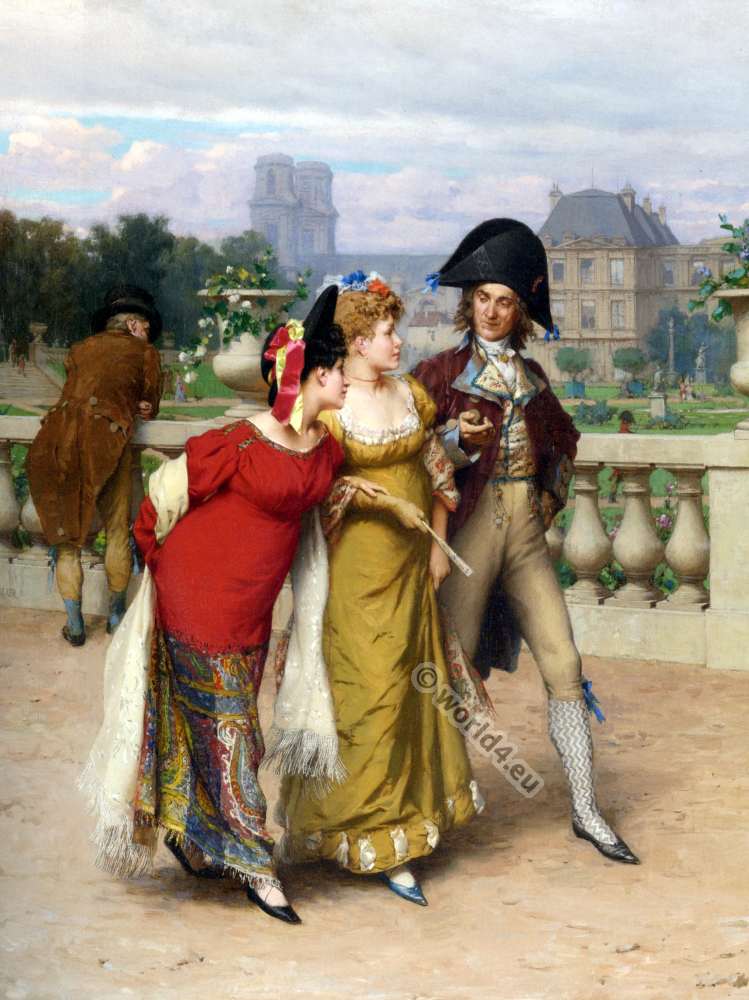Louis XVI August of France (August 23, 1754 in Versailles; † January 21, 1793 in Paris) from the House of Bourbon was first Duke of Berry as Louis Auguste and became Dauphin after the death of his father in 1765 and finally King of France and Navarre after the death of his grandfather in 1774. He was the last king of the Ancien Régime.
Louis XVI received a difficult inheritance from his grandfather Louis XV. France was on the verge of financial ruin and within the framework of the absolutist monarchy the king was unable to overcome the crisis.
In the course of the French Revolution he was deprived of his power and in 1791 was forced to agree to the transformation from an absolute to a constitutional monarchy, as whose head, now King of the French, he acted. He was deposed in 1792, sentenced to death by the revolutionaries in 1793 and executed by the guillotine.
Content: An act of clemency — Two Parties in the Chambers and Government – The Royal Family in the Temple – Execution of the King — Festival to celebrate the anniversary of his death — The Queen, and Madame Elisabeth, go to the scaifold – The Conciergerie prison — Death of the Dauphin — A strange caprice of fashion. The “telescope portrait” — The Princess exchanged; reception at the Court of Austria — “The only man of the family.”
An act of clemency
AMONG the earliest acts of the newly established Directoire was one of clemency and justice, which cannot but reflect credit on the spirit of moderation and generosity to fallen foes animating at any rate some of their number—the release of the unhappy and long-suffering Princesse Royale, daughter of Louis XVI. The Government was overwhelmed, as may well be, during these first months of its power, with a hundred matters of first-rate importance and vital urgency.
Amongst these were especially pressing the crucial question of war or peace, the policy to be adopted towards the émigrés, both those actually beyond the frontiers and the equally numerous class of those declared such by law though still residing in France, and towards the Church and its priests, and last but not least, the rescue of the finances of the Republic from the almost hopeless impasse into which they had drifted. All these problems were clamouring for solution; but nevertheless the Directors found time to arrange for and carry out the long-delayed release of “la fille Capet.”
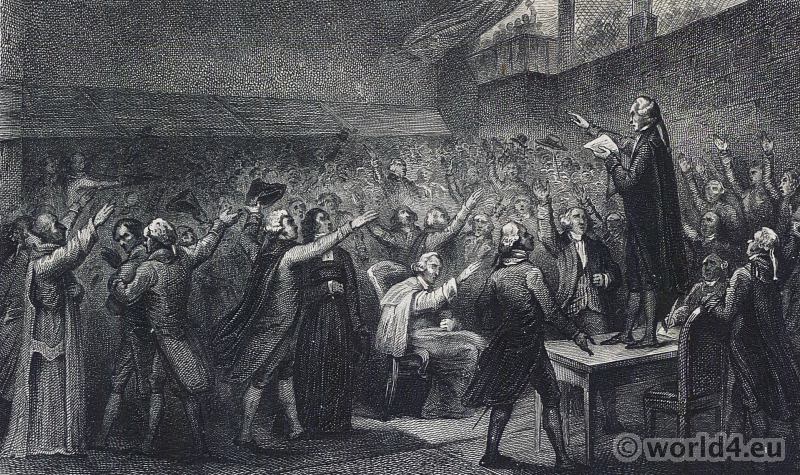
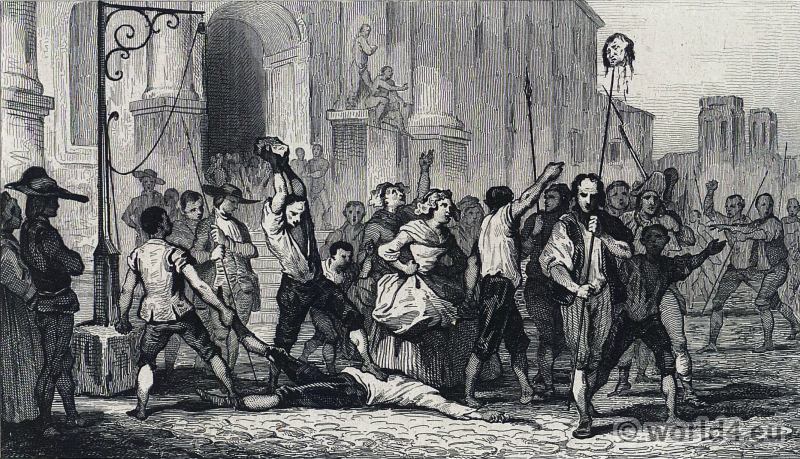
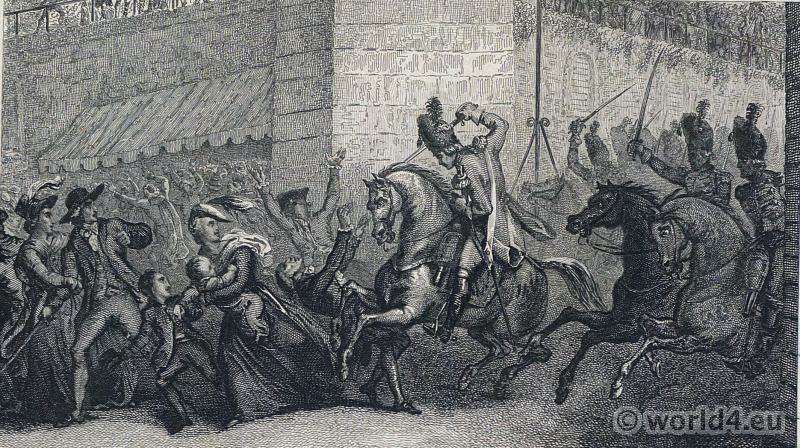
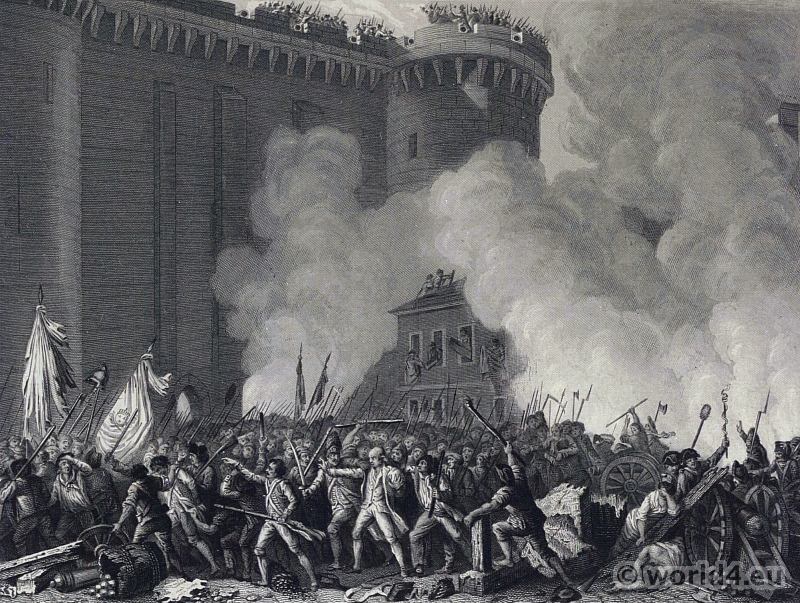
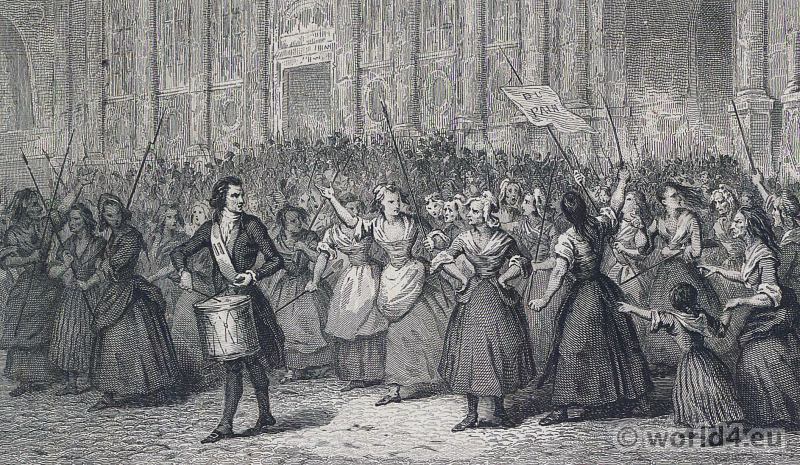

Two Parties in the Chambers and Government
It was not, however, without a struggle that even this tardy deed of mercy was decided on, the more violent party being still strongly opposed to any mitigation of the rigorous treatment of the last of the hated Royal Family. ” The Directory and the Corps Législatif were divided into two parties, the Constitutionalists and the Revolutionists.
The Constitutional party was composed of nearly all the two hundred and fifty members of the new Third and of many members the right of the Convention, of two Directors, Carnot and Letourneur, and of the majority of the magistrates and other officials elected in 1795. It had the support of the electors and of the great mass of the people. Its adherents could consequently hope in two or at most in three years’ time to be in a majority in the Legislative Body, and consequently to replace the existing Directors, as they retired, by members of their own party. In fact, nothing but fair play was needed to make them masters of the future of France.
By the opposite party the Constitutionalists were vehemently accused of enmity to the Republic and of open or concealed royalism; and this accusation was the ground of their eventual destruction, of the failure of the Constitution and the consequent fall of the Republic… . The Revolutionary party was composed of three members of the Directory — Rewbell, Larevellière-Lépaux, and Barras — of most of the Ministers, notably the most powerful of them, Merlin of Douai, of the Commissaries and other officials appointed by the Directory, and of the majority of the ex-members of the Convention in the Corps Législatif.
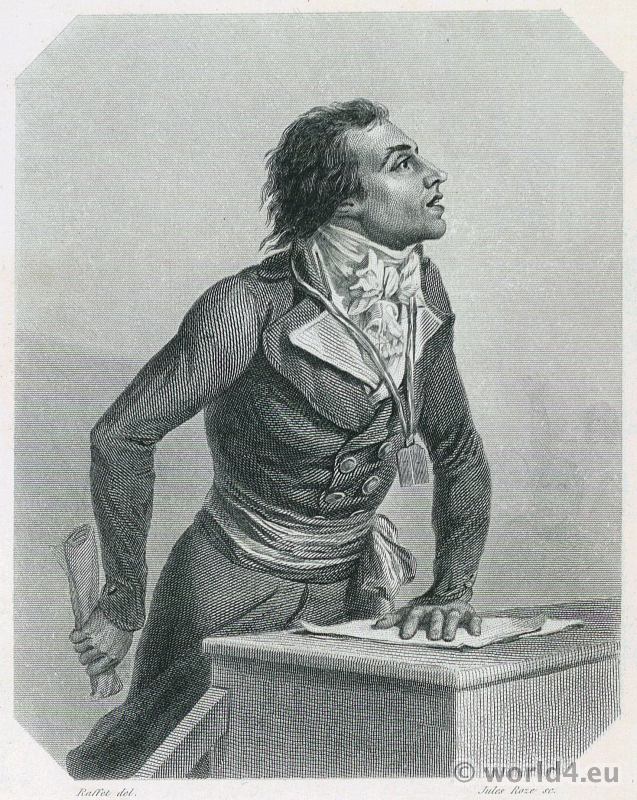

Their policy was to continue the war, to maintain the law of October 25 (1795—law against the priests), and generally to uphold the revolutionary system of government. Their guiding motive was not so much revolutionary enthusiasm or political principle as self-preservation; they desired to prolong the era of persecution and ostracism as the surest way of saving their own heads from peril; as regicides they dreaded the return of the monarchy, as Terrorists they feared the vengeance of the people.”
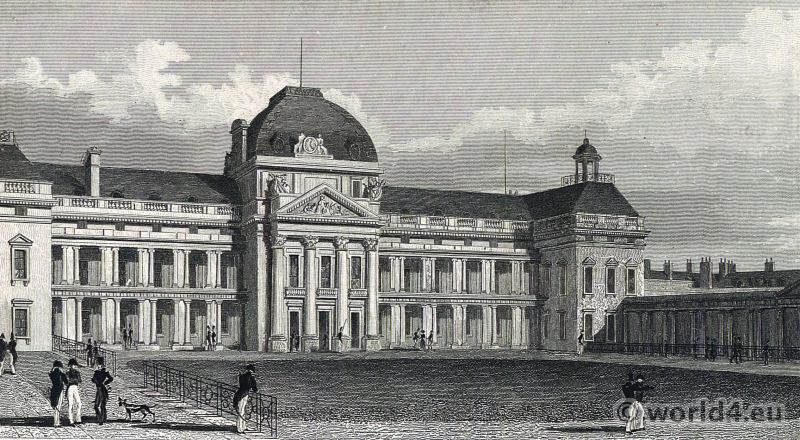
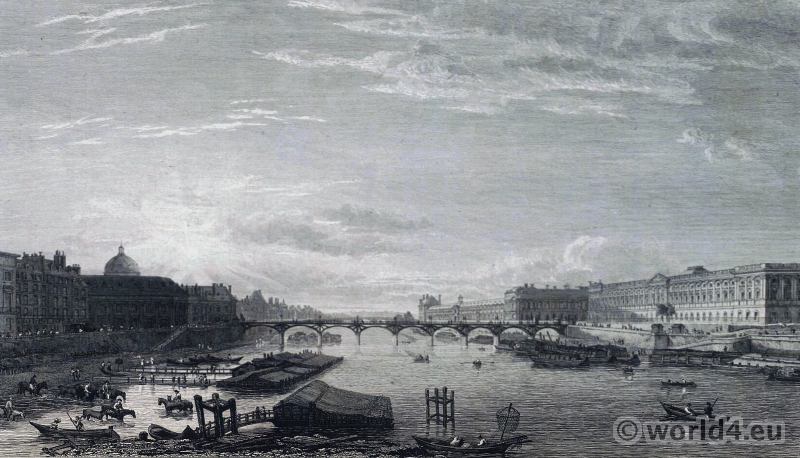
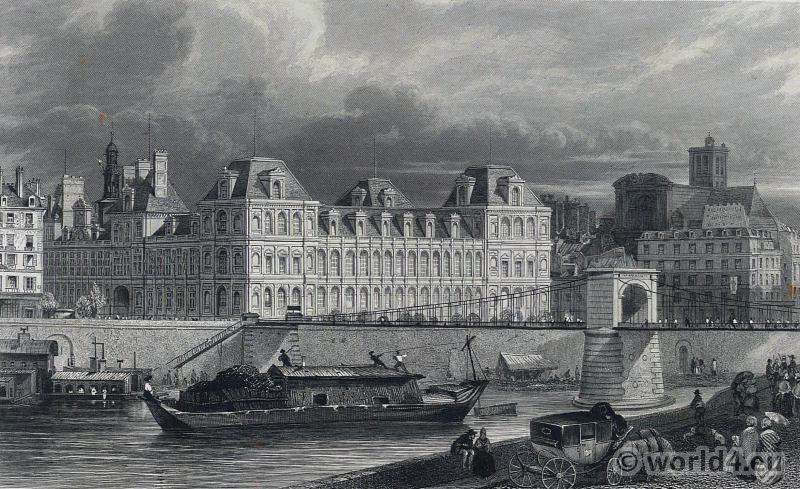
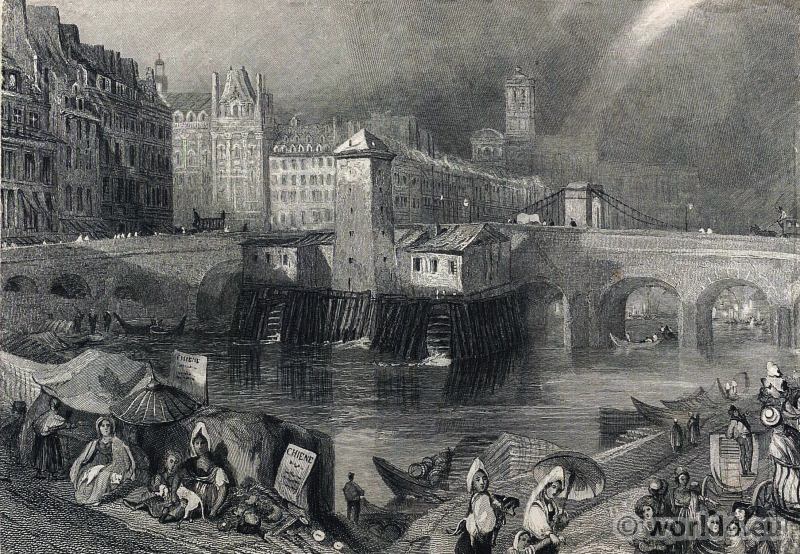
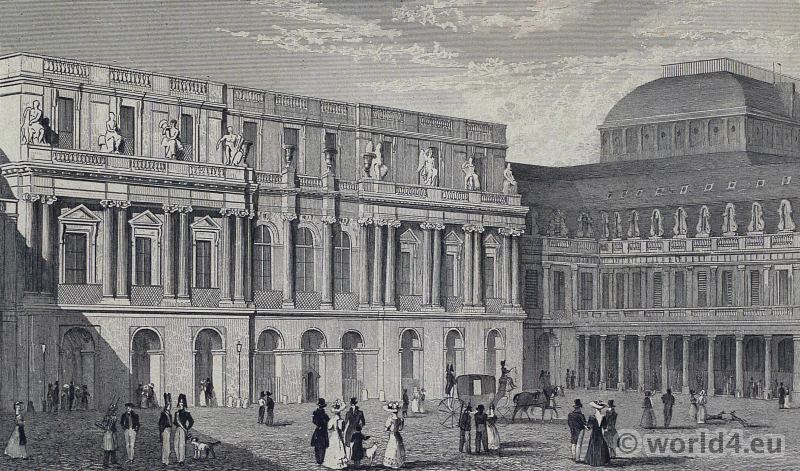

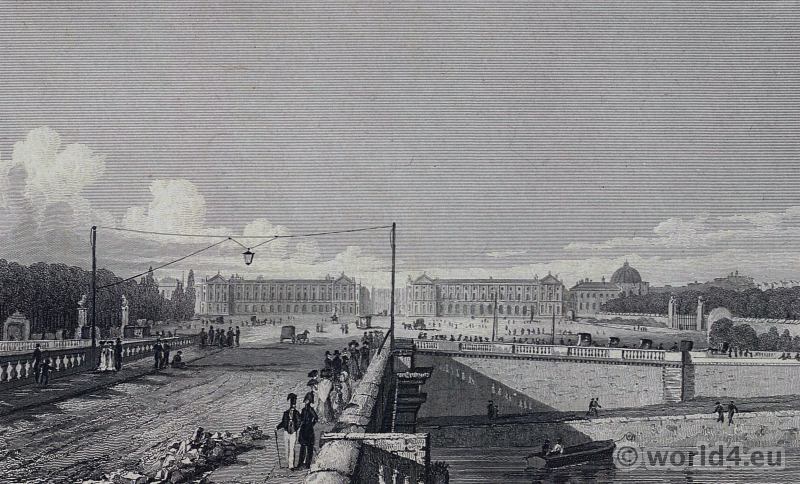
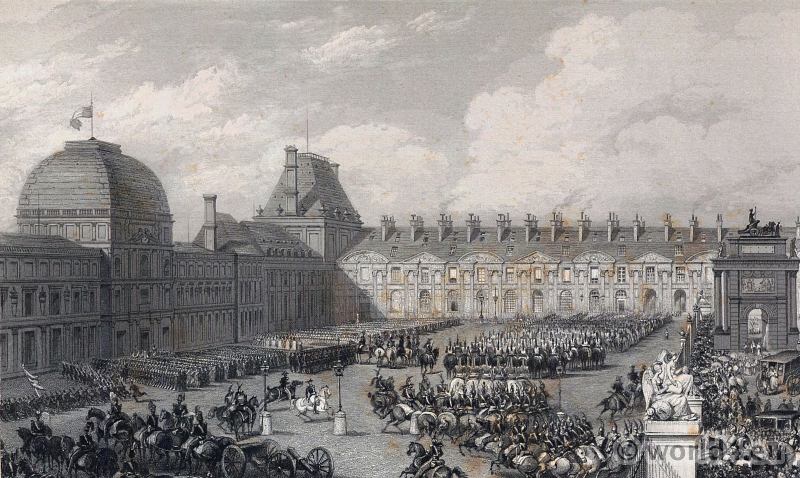
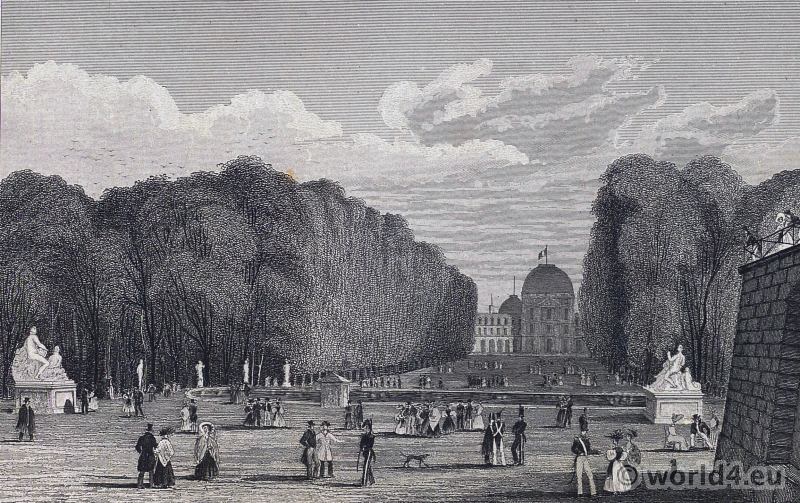
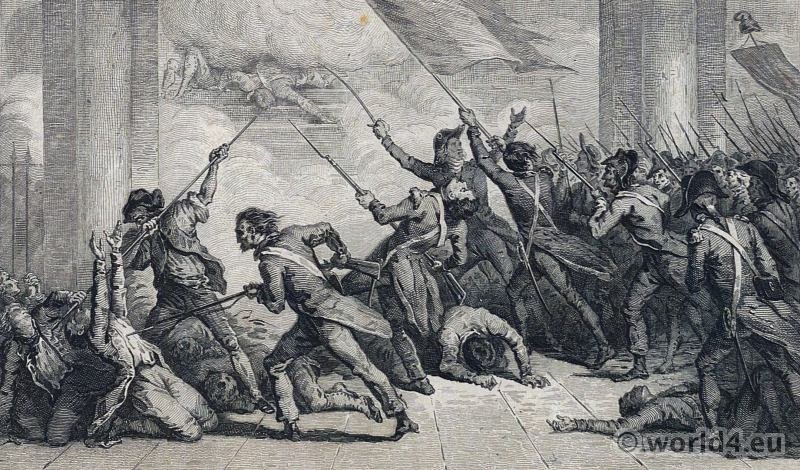
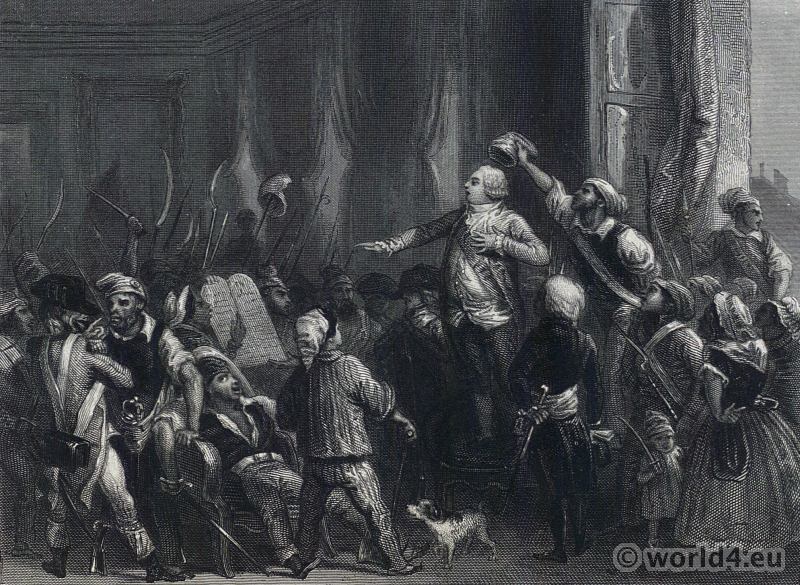
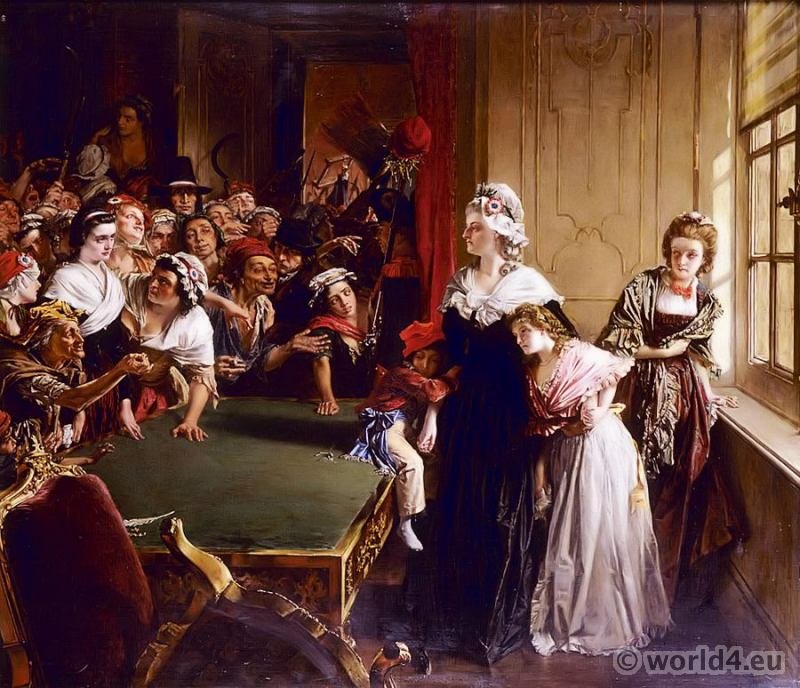
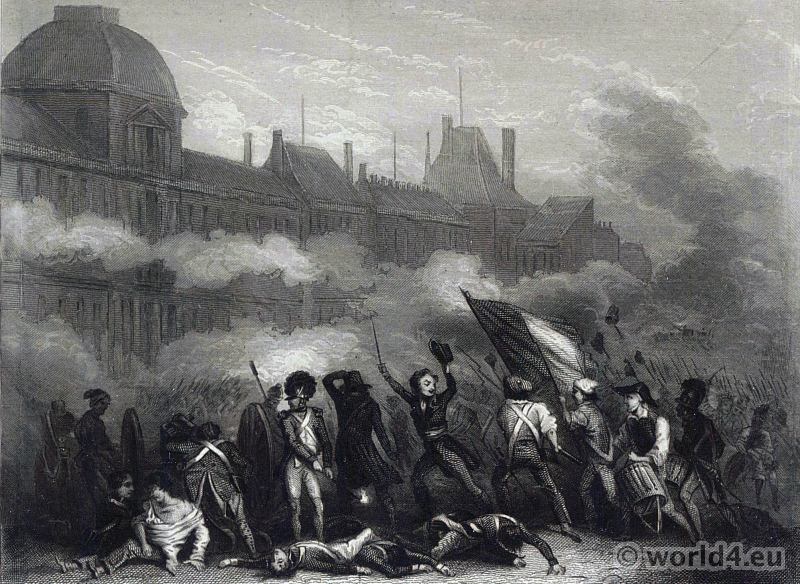
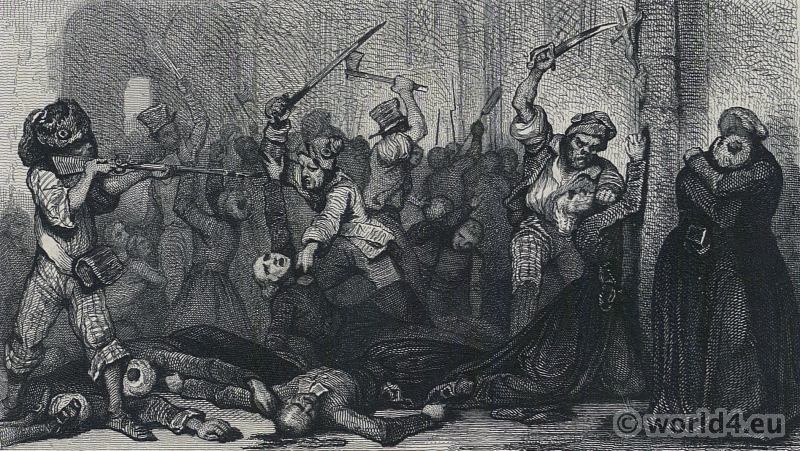
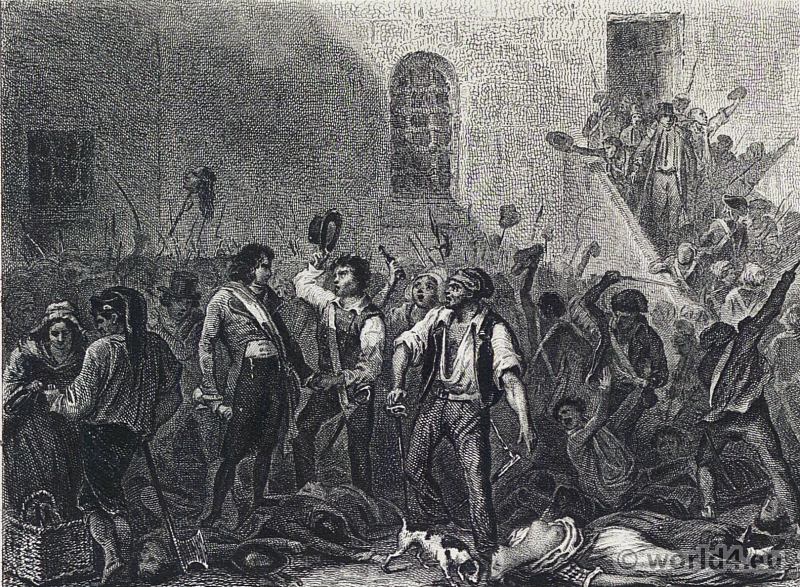
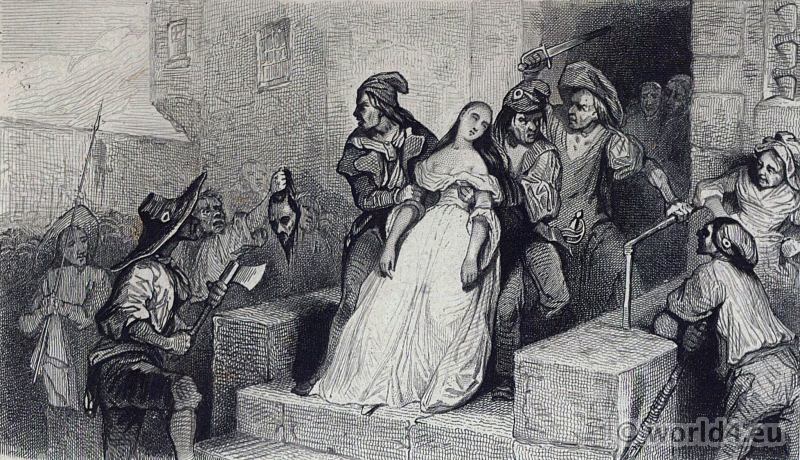
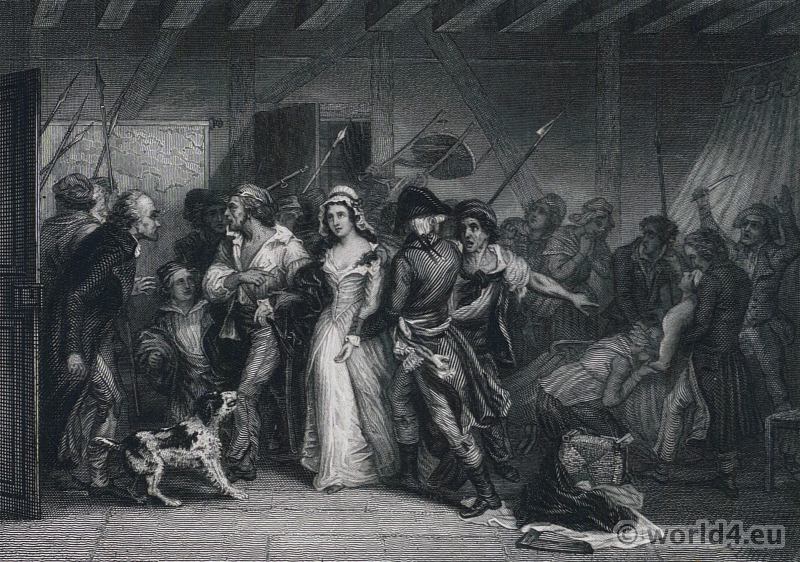

Though out-voted both in the Chambers and at the Council table of the Directors, where, as we see, they were in a minority of voices of two to three on most of the other and more momentous questions at issue, the Constitutionalists nevertheless succeeded in carrying their point as to the enlargement of the Princesse Royale. After all she was only a girl, and one of no very marked individuality or force of character,— her conduct and bearing throughout the months of weary imprisonment of her father and mother while awaiting trial had been a rather pitiable foil to the heroism and noble self-devotion of her aunt, Madame Elisabeth.
She was the last of her family; King, Queen, and Madame Élisabeth had all died on the scaffold, and the Dauphin had mysteriously disappeared — perished (there is not really much reason for doubting the fact, in spite of a dozen wild stories to the contrary) of neglect and ill-usage, and nothing was to be feared from the sole and helpless survivor. Not the most rabid of the “old Republicans,” the stalwarts of 1789 and 1793, could find much to object against a step which the milder feelings now largely prevailing, if not the considerable reaction in favour of the old regime of which many symptoms were to be observed here and there, almost universally approved.
The Royal Family in the Temple.
Marie-Thérèse-Charlotte, Princesse Royale, in later days Duchesse d’Angoulême, had been incarcerated in the gloomy tower of the Temple at the same time as her father, mother, brother, and aunt. The Luxembourg, by the by, had been designated in the first instance by the National Assembly as the King’s place of residence, or shall we say place of confinement, after the 10th August, fatal to Monarchy; but he and his were transferred to the Temple instead “by the all powerful Commune” (that is the new insurrectionary, improvised Municipality of Paris, calling itself ” Council General of the Commune,” “under pretext that it could not otherwise be answerable for the safety of his person.” “The Luxembourg and safeguard of the Nation could not be got ready: nay, it seems the Luxembourg has too many cellars and issues; no Municipality can undertake to watch it.
The compact prison of the Temple, not so elegant indeed, were much safer. To the Temple, therefore! On Monday, 13th day of August 1792, in Mayor Pétion’s carriage, Louis and his sad suspended Household fare thither; all Paris out to look at them… . French Royalty vanishes within the gates of the Temple: these old peaked towers, like peaked Extinguisher or Bonsoir, do cover it up;— from which same Towers, poor Jacques Molay and his Templars were burnt out by French Royalty, five centuries since. Such are the turns of Fate below.”
Thence she had seen all that were near and dear one by one taken from her, and for over two years now she had been alone in her prison, and it almost seemed forgotten by the ruthless enemies of Royalty. The first to be summoned away from the little family group in the Temple was the father—always a loving, affectionate parent and a kindly, amiable man, though lacking in so many kingly qualities, and egregiously failing to rise to the level of the critical times and perilous circumstances in which he found himself and the ancient Monarchy of France involved. He had endured, with quiet, dignified patience, nearly six months’ captivity when the end came.
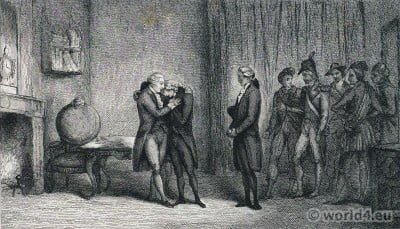

“King Louis, now King and Majesty to his own family alone, in their own Prison Apartment alone, has, for months past, been mere Louis Capet and the Traitor Veto with the rest of France. Shut in his Circuit of the Temple, he has heard and seen the loud whirl of things; yells of September Massacres, Brunswick war-thunders dying off in disaster and discomfiture; he passive, a spectator merely; waiting whither it would please to whirl with him. From the neighbouring windows, the curious, not without pity, might see him walk daily, at a certain hour, in the Temple Garden, with his Queen, Sister and two Children, all that now belongs to him on this Earth. Quietly he walks and waits; for he is not of lively feelings, and is of a devout heart. The wearied Irresolute has, at least, no need of resolving now. His daily meals, lessons to his Son, daily walk in the Garden, daily game at ombre or draughts, fill up the day: the morrow will provide for itself.
“The morrow indeed; and yet How? Louis asks. How? France, with perhaps still more solicitude, asks. How? A King dethroned by insurrection is verily not easy to dispose of. Keep him prisoner, he is a secret centre for the Disaffected, for endless plots, attempts and hopes of theirs. Banish him, he is an open centre for them; his royal war-standard, with what of divinity it has, unrolls itself, summoning the world. Put him to death? A cruel questionable extremity that too: and yet the likeliest in these extreme circumstances, of insurrectionary men, whose own life and death lies staked ; accordingly it is said, from the last step of the throne to the first of the scaffold there is short distance.”

The parting scene with wife and children was grievous indeed. “At half-past eight, the door of the ante-room opened: the Queen appeared first, leading her Son by the hand; then Madame Royale and Madame Élisabeth: they all flung them selves into the arms of the King. Silence reigned for some minutes; interrupted only by sobs. The Queen made a movement to lead his Majesty towards the inner room, where M. Edgeworth (the Abbé Edgeworth, who had come to act as the King’s Confessor) was waiting unknown to them: ‘No,’ said the King, let us go into the dining-room; it is there only that I can see you.’
They entered there; I shut the door of it, which was of glass. The King sat down, the Queen on his left hand, Madame Élisabeth on his right, Madame Royale almost in the front; the young Prince remained standing between his father’s legs. They all leaned towards him, and often held him embraced. This scene lasted an hour and three quarters; during which we could hear nothing; we could see only that always when the King spoke, the sobbing of the Princesses redoubled, continued for some minutes; and that then the King began again to speak.”
Execution of the King Louis XVI.
Louis, on parting with his family, promised to see them again the next day; but, on reaching his room, he felt that the trial would be too much, and, pacing up and down violently, he exclaimed, ‘I will not go!’ This was his last struggle; the rest of his time was spent in preparing for death. The night before the execution he slept calmly. Clery awoke him, as he had been ordered, at five, and received his last instructions. He then communicated, commissioned Clery with his dying words and all he was allowed to bequeath, a ring, a seal, and some hair. The drums were already beating, and the dull sound of travelling cannon, and of confused voices, might be heard. At length Santerre arrived. ‘ You are come for me,’ said Louis; ‘I ask one moment.’ He deposited his will in the hands of the municipal officer, asked for his hat, and said, in a firm tone, ‘Let us go.’

“The carriage was an hour on its way from the Temple to the Place de la Revolution. A double row of soldiers lined the road; more than forty thousand men were under arms. Paris presented a gloomy aspect. The citizens present at the execution manifested neither applause nor regret; all were silent. On reaching the place of execution, Louis alighted from the carriage. He ascended the scaffold with a firm step, knelt to receive the benediction of the priest, who is recorded to have said, ‘Son of St. Louis, ascend to heaven!’ With some repugnance he submitted to the binding of his hands, and walked hastily to the left of the scaffold. ‘ I die innocent,’ said he; ‘I forgive my enemies; and you, unfortunate people …’ Here, at a signal, the drums and trumpets drowned his voice, and the three executioners seized him. At ten minutes after ten he had ceased to live.”

Festival to celebrate the anniversary of his death
It may be his death was a political necessity. At any rate, it is hard to see what else the party of the Revolution could have done without gravely compromising their own safety then and thereafter. Nearly four years later, on the establishment of the Directorial government, in 1797, the Convention laid it down as an indispensable condition of eligibility for election as a member of the new Executive that each of the Five chosen as Directors must have been of the majority who voted for the King’s death.
Next year, at the beginning of 1798, a resolution was proposed to the Council to the effect that the anniversary of January 21st should be celebrated, and that on that day the members of the two Councils should swear an oath of hatred to Royalty. The intention was by this means to force the Deputies of the new Third to join forces with the Republic, or to speak quite candidly, to embarrass them and put them in a false position… . The resolution was eventually adopted, and the Council of Ancients approved it.

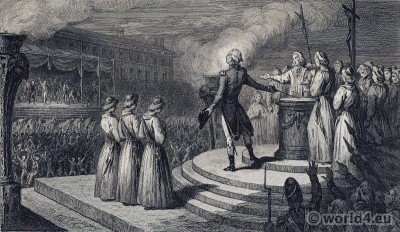
“The festival was held in the Champ-de-Mars, in presence of the Directors and all the civil and military authorities. Rewbell delivered a discourse. In each of the Councils the President also pronounced one. All the Deputies, even the Royalists, swore hatred to royalty, though some of them were for making additions to the oath by way of easing their consciences, which were rather hard put to it. Thus André, of the Five Hundred, added, ‘and to every species of tyranny.’ The Council, however, ordered that the terms of the oath as prescribed by law must be literally and exactly observed. In the Council of Ancients, Dupont de Nemours, who had all the vivacity of a young man and a caustic wit of his own, supplemented thus: ‘And unfalterating resistance to every sort of tyrants, whatever their number or power.’ There can be no doubt whatever there were not a few Jesuitical oaths taken, oaths with a mental reservation—in other words, false oaths.”
The Queen, and Madame Elisabeth, go to the scaffold.
The next to be torn from the unhappy girl’s side was her widowed mother, the Queen Marie-Antoinette. For five months more, after the King’s death, the rest of the bereaved family had been allowed to share their captivity together in the great Tower of the Temple; but on July 1 (1793) the Queen had been removed to another room in a neighbouring part of the prison. Then during the night of July 3, the little Dauphin had been taken from her, to be handed over to the tender mercies of Simon the Cobbler.
From that day she never again saw son, daughter, or sister-in-law. Two months later (beginning of September) she was removed, by order of the Convention to the Conciergerie — the old gloomy prison forming part of the vast pile of buildings of the Palais de Justice on the island of the Cité in the heart of Paris — to await her trial at the bar of the Revolutionary Tribunal. “On the second of this month, at three in the morning, a vehicle rolled off, with closed blinds, from the Temple to the Conciergerie.
Within it were two Municipals; and Marie-Antoinette, once Queen of France! There in that Conciergerie, in ignominious dreary cell, she, secluded from children, kindred, friends and hope, sits long weeks; expecting when the end will be.”
The Conciergerie prison of Paris.
Every vestige of the old fabric of the Temple has disappeared. The Great Tower was pulled down in 1811, and a square and market now occupy the site of the ancient fortress of the Knights Templars and scene of the long-drawn agony of the Family of France. But the Conciergerie still exists (the picturesque round towers facing the Quai de l’Horloge form part of it and are familiar to every tourist), and the actual dungeon occupied by the unhappy Queen is shown, now transformed into a chapel. Moreover, the ancient gateway to the prison, the veritable gate and flight of steps by which the Queen—and how many other victims of the Revolution!— entered, and before which Sanson’s tumbrils stood waiting on the fatal morning of October 16th, 1793, is still there, though few visitors to Paris, or indeed residents, are aware of the fact.
“Under an arched gateway, behind heavy iron bars, to the right of the main entrance of the Palais de Justice, cowering beneath the masses of the monumental stairway that leads up to the great doors, lies a little square courtyard, damp and dark, sunk below the level of the Cour du Mai, with which it communicates by nine steps. Only a few years ago the broad flags with which it was laid were still covered with the greenish coating of moss and lichen, and rimmed with the stains of moisture and mildew—the sort of paving we see in deserted cloisters; it was a gloomy, almost funereal place. A low door, dingy, worm-eaten and dilapidated, guarded by double iron gates, half eaten away with rust, could be discerned in the background, always hermetically closed. An iron balustrade, dating from Louis XVI, bordered the well-worn steps. The few who were aware what awful tragedies this courtyard, so rich in terrible associations, had witnessed, sometimes came with hearts of ruth and respect to indulge in long daydreams within the stone walls of the narrow enclosure.
“In the gloomy days of the Terror it was the wicket of the Conciergerie, and the only one at that time!
“Then, at half-past nine in the morning, the hour of the opening of the Revolutionary Tribunal, the top of the wall overlooking this sunk courtyard would be lined by a howling, vociferating crowd of men and women—more women than men, who came, as to a play, to take station on the steps of the great stairway of the Palais, which afforded so convenient a coign of vantage for viewing the drama that was daily enacted at the prison gate… .
“But the great sensation of the day was in the afternoon, towards half-past three, when the tumbrils arrived. How many to-day? was the question; and great was the disappointment when only two or three drew up… .
“About four o’clock, the condemned filed out one by one through the grey door… . All the condemned of all parties, Marie-Antoinette no less than Mme. Roland, Charlotte Corday and the Abbesse de Montmorency, Cécile Renaud smiling and the Dubarry sobbing and dishevelled, Danton, Robespierre, the Girondists, the vile Hébert and the virtuous Malesherbes, the Marechal de Noailles and Camille Desmoulins, the bravest, the noblest, the maddest, all trod these flagstones, passed out through that terrible gate.”
The Trial of Marie-Antoinette 1793.
After six weeks’ detention in the Conciergerie, the Queen was summoned to confront her judges.
“On Monday, the Fourteenth of October, 1793, a Cause is pending in the Palais de Justice, in the new Revolutionary Court, such as those old stonewalls never witnessed: the Trial of Marie-Antoinette. The once brightest of Queens, now tarnished, defaced, forsaken, stands here at Fouquier-Tinville’s Judgement bar; answering for her life… . To such changes of human fortune what words are adequate? Silence alone is adequate. …

At four o’clock on Wednesday morning, after two days and two nights of interrogating, jury-charging, and other darkening of counsel, the result comes out sentence of death. ‘Have you anything to say?’ The accused shook her head, without speech. Night’s candles are burning out; and with her too Time is finishing, and it will be Eternity and Day. This Hall of Tinville’s is dark, ill-lighted except where she stands. Silently she withdraws from it, to die.” “Few minutes after the Trial ended, the drums were beating to arms in all Sections; at sunrise the armed force was on foot, cannons getting placed at the extremities of the Bridges, in the Squares, Crossways, all along from the Palais de Justice to the Place de la Révolution. By ten o’clock, numerous patrols were circulating in the Streets; thirty thousand foot and horse drawn up under arms.
Table of content: The Queen, and Madame Elisabeth, go to the scaifold – The Conciergerie prison — Death of the Dauphin — A strange caprice of fashion. The “telescope portrait” — The Princess exchanged; reception at the Court of Austria — “The only man of the family.”
The execution of Marie-Antoinette.
At eleven, Marie-Antoinette was brought out. She had on an undress of piqué blanc: she was led to the place of execution, in the same manner as an ordinary criminal; bound, on a Cart; accompanied by a Constitutional Priest in Lay dress; escorted by numerous detachments of infantry and cavalry.
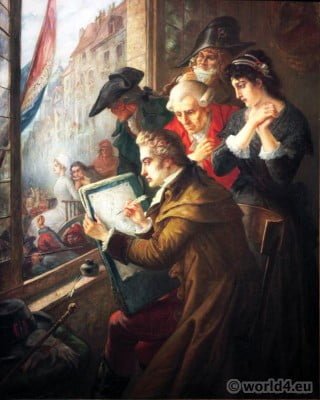
These, and the double row of troops all along her road, she appeared to regard with indifference. On her countenance there was visible neither abashment nor pride. To the cries of Vive la République and Down with Tyranny, which attended her all the way, she seemed to pay no heed. She spoke little to her Confessor. The tricolour streamers on the housetops occupied her attention, in the Streets du Roule and Saint-Honoré; she also noticed the Inscriptions on the house-fronts.
On reaching the Place de la Révolution, her looks turned towards the Jardin National, whilom Tuileries; her face at that moment gave signs of lively emotion. She mounted the Scaffold with courage enough; at a quarter past Twelve, her head fell; the Executioner showed it to the people, amid universal, long-continued cries of Vive la Republique.”
Execution of Madame Élisabeth, the King’s sister
We have seen already how the Dauphin had been separated from the rest of the Royal captives as early as the beginning of June, 1793. From that date, therefore, only Madame Élisabeth, the King’s sister, was left to bear the Princesse Royale company in the grim prison-rooms of the Tour du Temple.
Throughout all these weary months the former had continued to show the same heroic fortitude and gentle self devotion, and did much to support and console the feeble spirit of her niece.
But at length this noble woman too was summoned to appear before the dreaded Revolutionary Tribunal. “Her Trial was like the rest: for Plots, for Plots. She was among the kindliest, most innocent of women.” She was condemned, and executed on April 22, 1794, along with four-and-twenty other victims of the busy guillotine.
Death of the Dauphin
“The Royal Family is thus reduced to two; a girl and a little boy. The boy, once named Dauphin, was taken from his Mother while she yet lived; and given to one Simon, by trade a Cordwainer, on service then about the Temple Prison, to bring him up in principles of Sansculottism. Simon taught him to drink, to swear, to say the carmagnole.
Simon is now gone to the Municipality (in January, 1794): and the poor boy, hidden in a tower of the Temple, from which in his fright and bewilderment and early decrepitude he wishes not to stir out, lies perishing, his ‘shirt not changed for six months’; amid squalor and darkness, lamentably.”
Towards the end, especially after the fall of the Terrorists and death of Robespierre on 9 Thermidor (July 27, 1794), the unhappy heir to the Monarchy was treated with somewhat less inhumanity; physicians were sent by order of the Convention to examine his state of health and do what was still possible to ameliorate it, and two attendants, men of respectability and kindly disposition, were appointed to wait on him.
But it was too late; ill-usage and neglect had done their work, and the unfortunate Dauphin died on June 10, 1795. Two extracts from Alison’s account of these unhapppy events give pathetic pictures of the dying child a little before his end, and on his death-bed: ” On the battlement of the platform nearest the left turret, the rain had, by perseverance through ages, hollowed out a kind of basin. The water that fell remained there for several days ; and as, during the spring of 1795, storms were of frequent occurrence, this little sheet of water was kept constantly supplied.
Whenever the child was brought out upon the platform he saw a little troop of sparrows, which used to come to drink and bathe in this reservoir. At first they flew away at his approach, but, from being accustomed to see him walking quietly there every day, they had at last grown more familiar, and did not spread their wings for flight till he came up quite close to them. They were always the same, he knew them by sight, and perhaps like himself they were inhabitants of that ancient pile. He called them his birds; and his first action, when the door onto the terrace was opened, was to look towards that side—and the sparrows were always there.
As the Prince passed they rose in the air for an instant, wheeled about, and alighted again as soon as he was gone by. The child, leaning heavily on his keeper’s left arm, or rather hanging upon it, with his back against the wall, would remain motionless a long time together, looking at his birds. He saw them come and go, dip their beaks in the water, then their breasts, and then their wings, and then shake their plumage dry; and the poor little invalid pressed the arm of his guide with a gesture that seemed to say— ‘Alas! I cannot do as much!’ Then he would like to see them nearer, and, still with the help of his guide, would advance a few paces closer, then a few more, till at last he came so close that, by stretching out his arms, he could have touched them.
This was his greatest amusement. From this platform, enclosed between the battlements and the roof of the great tower, he could see nothing but the sky, and we can easily understand that he could not be indifferent to these little creatures; he delighted so much in their chirping, and he must have envied them their wings so heartily!” A last scene of all as the little Dauphin lies in extremes, one of his two attendants, Gomin, at his bedside. “Gomin, seeing the child calm, motionless, and mute, said to him: ‘I hope you are not in pain just now?’ ‘Oh! yes, I am still in pain, but not nearly so much—the music is so beautiful! “Now there was no music to be heard, either in the tower or anywhere near; no sound from without could reach the room where the young martyr lay expiring. Gomin, astonished, said to him: ‘From what direction do you hear this music?’ ‘From above!’ ‘Is it long that you have heard it?’ ‘Since you knelt down. Do you not hear it? Listen! Listen! ‘And the child, with a nervous motion, raised his faltering hand, as he opened his large eyes, illuminated by ecstatic delight.
His poor keeper, unwilling to destroy this last sweet illusion, appeared to listen also, with the pious desire of hearing what could not possibly be heard. “After a few minutes of attention, the child again started, his eyes sparkled, and he cried out, in intense rapture, ‘ From amongst all the voices, I have distinguished that of my mother!'”
A strange caprice of fashion. The “telescope portrait”
Since the execution of Madame Élisabeth, the Princess Royale had been utterly alone, and now by the death of the little Dauphin she was left the sole survivor of the pathetic family group that had inhabited the grim apartments in the Tour du Temple for so many weary months. The rigour, however, of her confinement had greatly relaxed since the revolution of 9 Thermidor, and still more so since the accession of the Directoire to power.
Above all, she was now freely permitted the privilege of taking exercise for some hours every day in the garden attached to the prison. But she was never once allowed to see the dying boy, who was separated from her only by a few stone walls and a few yards of space. “As her brother’s state grew more and more alarming, the affection of Madame Royale for him increased. One might have said she guessed his danger.
She was continually questioning the keepers and commissaries, without being able to obtain anything from them but vague words, which, though intended to reassure her, only alarmed her the more. Her entreaties to see her brother, and to be allowed to nurse him, were always refused.”
Towards the end of her long three years’ imprisonment a strange caprice took hold of the fashionable world of Paris. For there was a “fashionable world” once more in the capital, a new society made up of the most heterogeneous elements—renegade nobles, lucky speculators, successful army contractors, prosperous agiotetirs, dependents and hangers-on of all sorts of the Directorial Court. It became ” the thing “ to flock to the neighbourhood of the Temple, to watch from such points of vantage as commanded a view of the prison garden, the comings and goings of the captive Princess, and note her looks and demeanour from day to day.
Doubtless the main motive was curiosity, but not unmingled, it may be, with some secret if unexpressed sympathy with the ill-fated daughter of a king. It was quite a customary afternoon’s diversion among the modish dames of the early Directoire period to hire a window in one of the tall old houses overlooking the Temple precincts, and invite a company of friends to share the privilege of indulging in this sentimental if rather cruel inspection of fallen Royalty. An artist even went so far as to paint a portrait of the Princesse Royale by the aid of a telescope adjusted in one of these windows.
The Princess exchanged; reception at the Court of Austria
At last her release was resolved upon, and the preliminaries were soon arranged. “The Directory negotiated the exchange of the daughter of Louis XVI against the deputies Quinette, Bancal, Lamarque, Camus, and the minister Beurnonville, who had been delivered by General Dumouriez into the hands of Austria, deputy Drouet, taken prisoner when with the Army of the North, Maret and Sémonville, arrested by the same Power in defiance of the law of nations.”

Arrivée sur le territoire de Basle de la princesse Marie Thérese Charlotte, fille de Louis XVI le soir du 26 décembre 1795.
“The Princess set out from the Temple on the 27th of Frimaire (December 18th). The Minister of the Interior went himself to fetch her, and conducted her with the greatest respect to his hotel, whence she set out accompanied by persons of her own selection. An ample provision was made for her journey, and she was thus conveyed towards the frontiers.”
“The only man of the family.”
Her reception at the Court of Austria was far from cordial, and for some years to come she seemed only to have bartered one form of captivity for another— a more dignified but hardly a less irksome one. She afterwards married her cousin, the Due d’Angoulême, and played a part, though never a very brilliant or conspicuous part, at the Courts of Louis XVIII and Charles X.
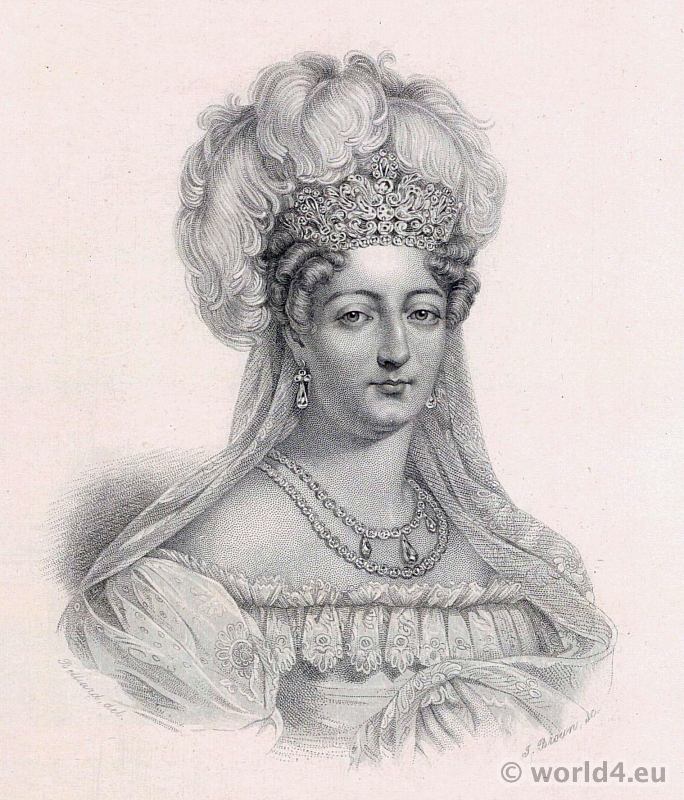
Her early misfortunes seem to have gone some way towards souring her temper and embittering her disposition. However, in 1815 she conducted herself at Bordeaux with so much courage and resource as to win the highest praise for gallantry and spirit. It was of this Princess that Napoleon observed to one of his Ministers, “She is the only man of the family.”
Source: Excerpt from the book: the days of the directoire, BY ALFRED ALLINSON. WITH A NOTE UPON THE COSTUME OF THE PERIOD BY JOHN COLBY ABBOTT.


